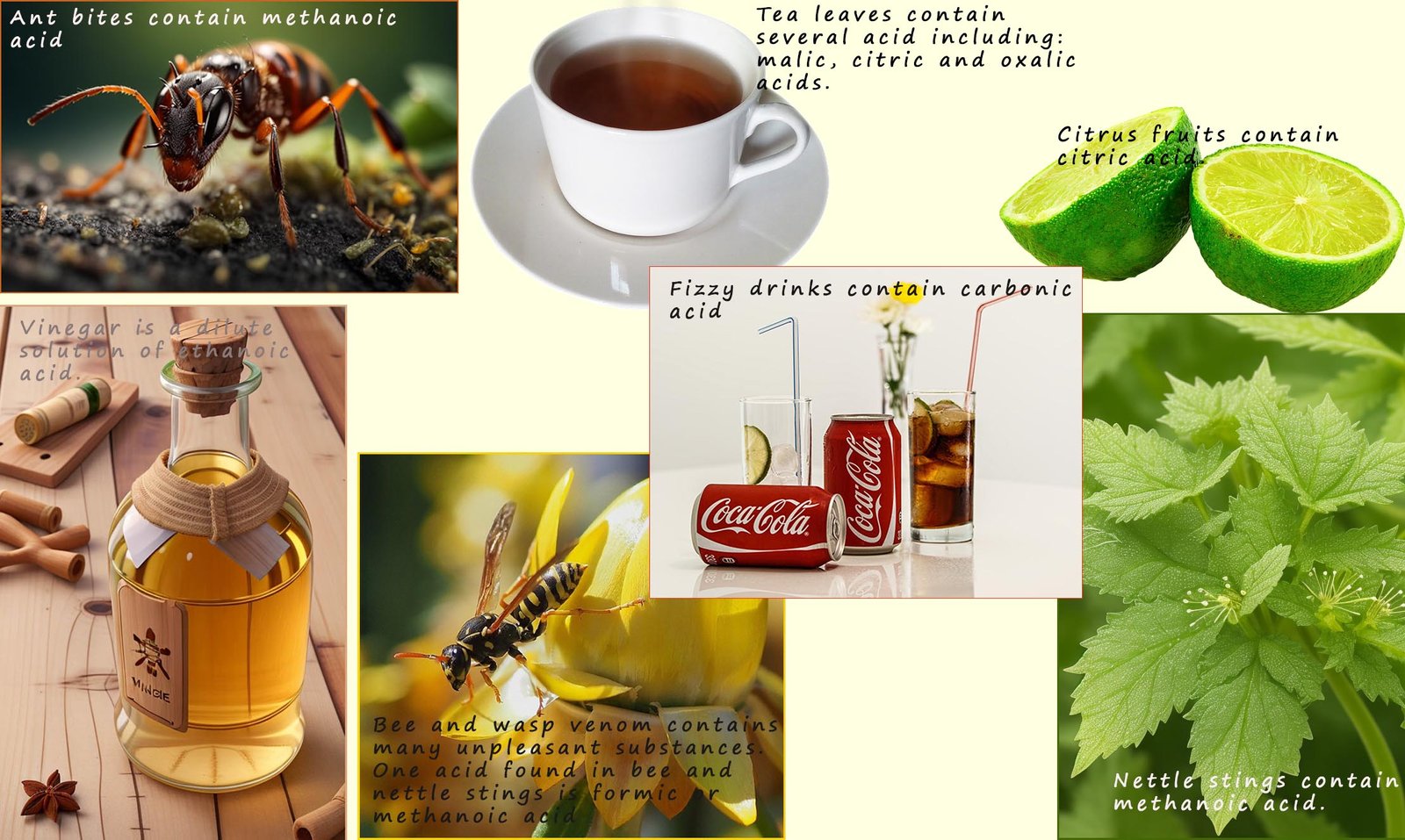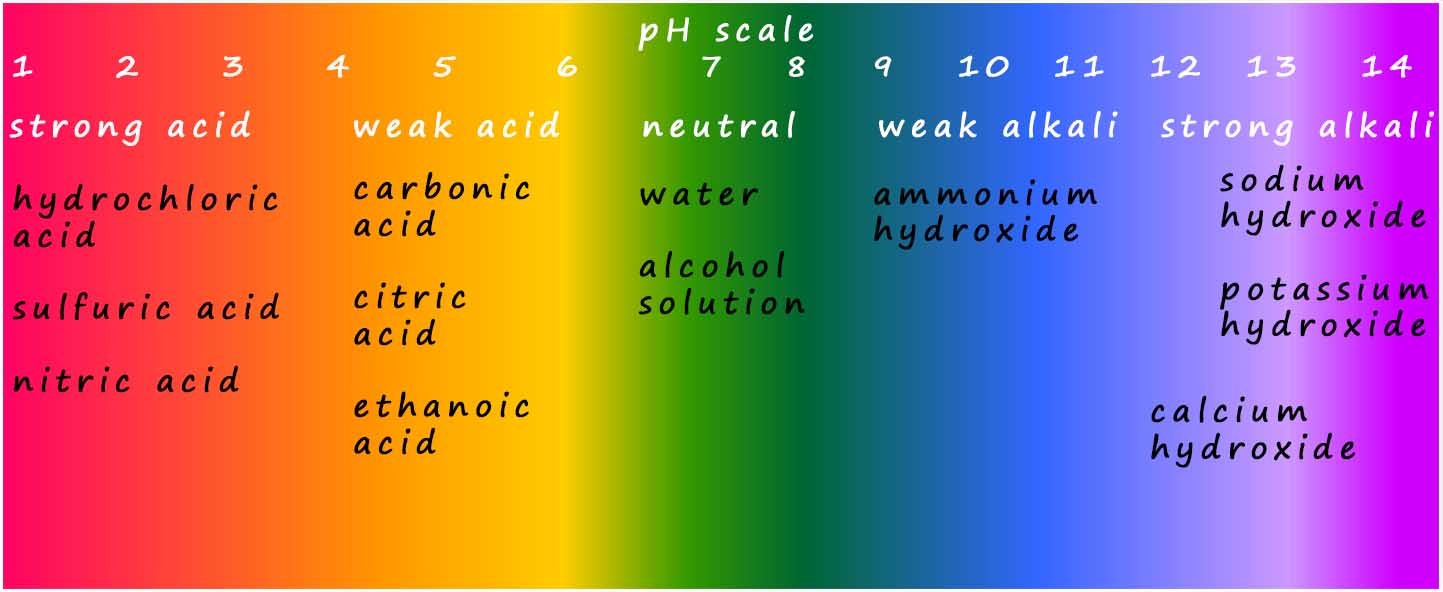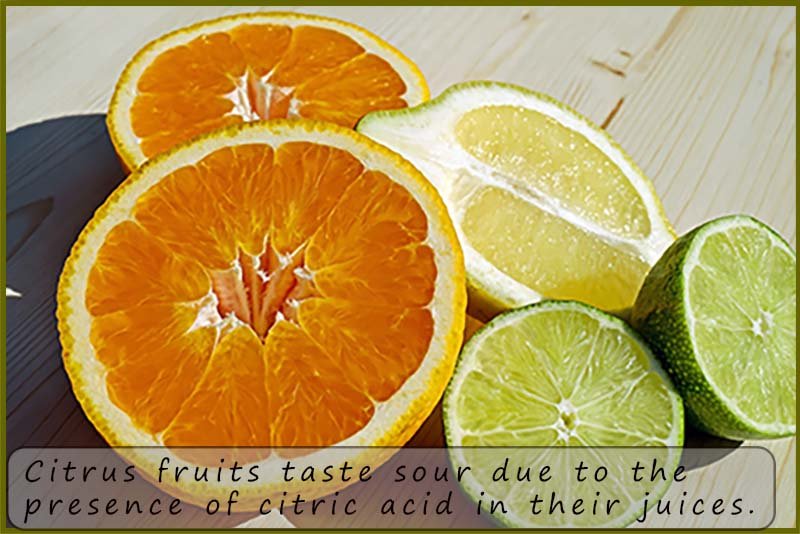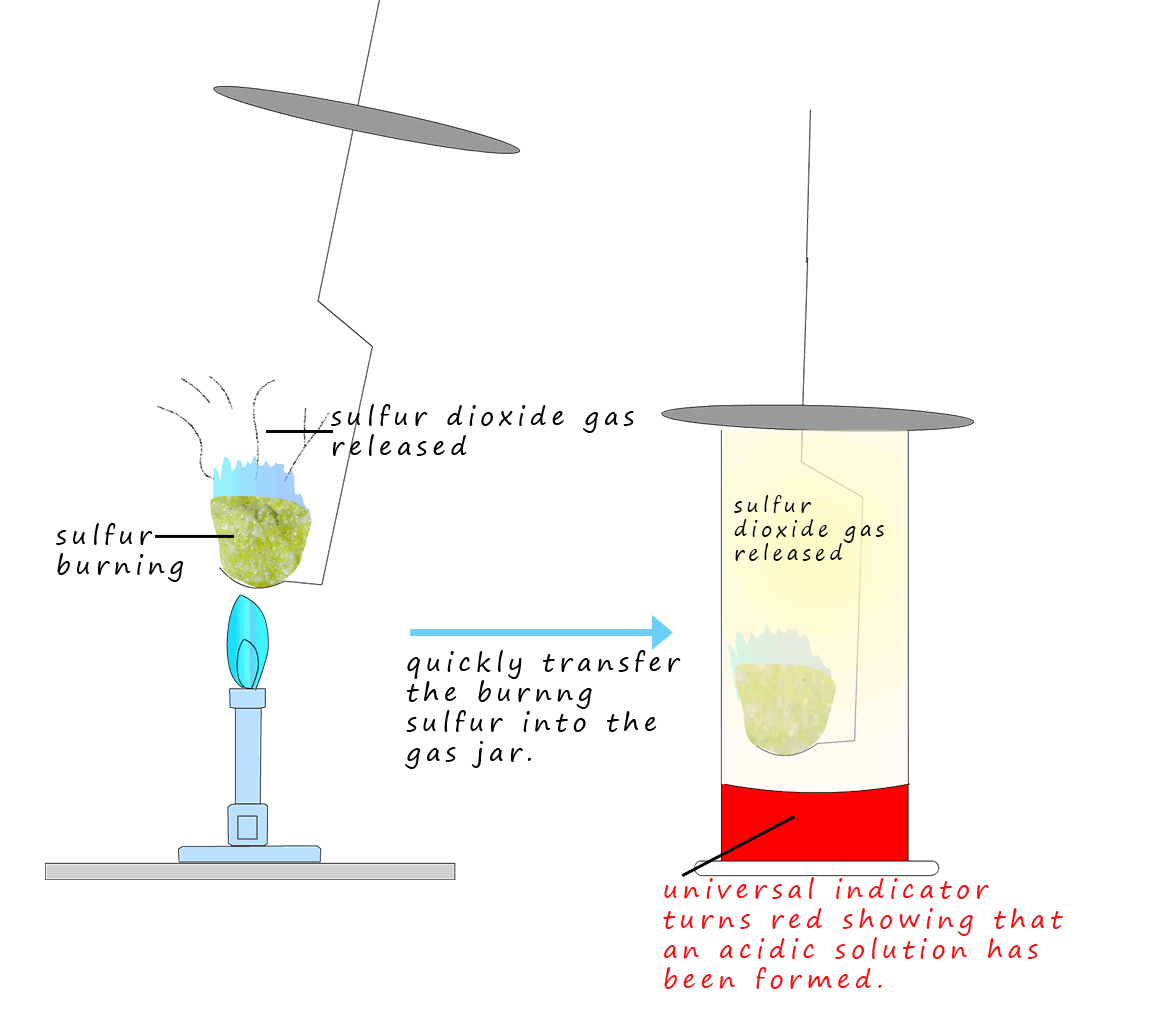

Higher and foundation tiers
The word acid sounds dangerous; indeed many acids are dangerous but many acids occur naturally and some are safe enough to eat and drink e.g.

 Hydrochloric, nitric and sulfuric acid are the three common mineral acids used in
the school laboratory. These are
strong acids and when fairly concentrated they are also
corrosive. This means that they will attack and destroy living
cells and tissue. The corrosive symbol shown opposite is found on many bottles of acids
and alkalis. However most of the acids you use in school are dilute solutions; this means that they have lots of
water in them. These dilute acids are irritants and may cause slight inflammation or reddening of the skin
Hydrochloric, nitric and sulfuric acid are the three common mineral acids used in
the school laboratory. These are
strong acids and when fairly concentrated they are also
corrosive. This means that they will attack and destroy living
cells and tissue. The corrosive symbol shown opposite is found on many bottles of acids
and alkalis. However most of the acids you use in school are dilute solutions; this means that they have lots of
water in them. These dilute acids are irritants and may cause slight inflammation or reddening of the skin
It is possible to decide if a substance is acidic or not by simply adding an indicator to it. Indicators are simply mixtures of dyes which turn different colours in acidic or alkaline conditions. One of the most useful and widely used indicators is universal indicator. We use indicators along with the pH scale to decide how acidic or alkaline a substance is. If a solution has a pH of 7 it is neutral; it will turn universal indicator green. If a solution has a pH of less than 7 it is acidic. If the pH is 1, 2 or 3 we say that the acid is a strong acid; it will turn universal indicator red. Weak acids have a pH above 3 but less than 7; the colours these acids turn universal indicator are shown in the image below. If the solution has a pH above 7 we say it is an alkali or an alkaline solution. Strong alkalis have a pH of 13 or 14, weak alkalis have a pH of 8 or 9. The colour range for universal indicator is shown below:

Acids are solutions which have an excess of hydrogen ions (H+) present. The common properties we associate with acids are all due to the presence of hydrogen ions (H+). The pH of a solution; whether it is an acidic, neutral or an alkaline solution depends on the concentration of the hydrogen ions, H+(aq). The lower the pH the higher the concentration of hydrogen ions, H+(aq). To change the pH of an acid or alkali by 1 the concentration of hydrogen ions must change by a factor of x10.
| pH | 0 | 1 | 2 | 3 | 4 | 5 | 6 | 7 | 8 | 9 | 10 | 11 | 12 | 13 | 14 | |
| concentration of hydrogen ions, H+ | x10 | x10 | x10 | x10 | x10 | x10 | x10 | x10 | ||||||||
This means for example:
Acids are aqueous solutions (aqueous simply means in water). Acids are formed when a substance dissolves in water to release an excess of hydrogen ions (H+(aq)) into the water. All acids contain the element hydrogen in their chemical formula. The table below shows the name and chemical formula of common acids e.g. hydrochloric acid contains the elements hydrogen and chlorine, sulfuric acid contains the elements hydrogen, sulfur and oxygen.
| Acid | Molecular formula |
|---|---|
| hydrochloric | HCl |
| sulfuric | H2SO4 |
| nitric | HNO3 |
| ethanoic | CH3COOH |
| carbonic | H2CO3 |
 Some acids have a sour taste. Citric acid is
often used in sweets to give them a sour taste. Lemons, grapefruit and
other citrus fruits are also sour due to the presence of
citric acid. Citric
acid is often used as a preservative for
foods since it helps prevent the browning of meats and vegetables. Citrus fruits also contain another
acid called ascorbic
acid. This acid is better known as vitamin C.
Some acids have a sour taste. Citric acid is
often used in sweets to give them a sour taste. Lemons, grapefruit and
other citrus fruits are also sour due to the presence of
citric acid. Citric
acid is often used as a preservative for
foods since it helps prevent the browning of meats and vegetables. Citrus fruits also contain another
acid called ascorbic
acid. This acid is better known as vitamin C.
Fizzy drinks such as Coca Cola are also acidic; they contain a weak acid called carbonic acid. Vinegar or ethanoic acid
is another common weak acid; we are all familiar with the sharp, sour taste of vinegar on our chips!
The acids you are most likely to use in the science lab are hydrochloric acid and sulfuric acid. These are often used as dilute solution; these solutions are likely to be classed as irritants. As the concentration of the acid increases, generally around 2 mol dm-3 then the hazard changes from irritant to corrosive.

Acids are normally made by burning a non-metal and then dissolving the non-metal oxide produced in water e.g. Sulfur is a non-metal; it is a yellow solid that melts easily when heated to form a thick tacky brown liquid which burns with a small blue flame. The smelly and toxic gas sulfur dioxide is released as the sulfur burns. A word and symbolic equation for this combustion reaction is shown below:

If the burning sulfur is quickly transferred to a gas jar containing a little water then the toxic gas sulfur dioxide quickly fills the jar. If the jar is shaken gently the sulfur dioxide gas will dissolve in the water forming sulfurous acid. If a little universal indicator is added it quickly turns red showing the presence of the sulfurous acid formed. A similar experiment can be done with other non-metals and the non-metal oxides which are produced are all acidic. That is they dissolve in water to form acids e.g.